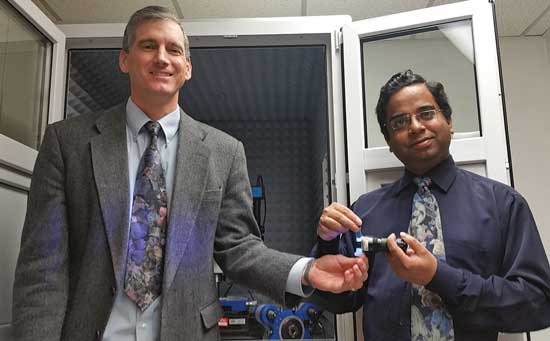LEDs made from food waste; New DNA technology has big potential
CUTTING EDGE TECHNOLOGY
 LEDs made from food waste
LEDs made from food wasteUniversity of Utah researchers have found a way to create LEDs (light emitting diodes) from food and beverage waste. LEDs can be produced by using quantum dots (QDs), or tiny crystals that have luminescent properties, to produce light. They can also be made from carbon dots (CDs), which are simply QDs made of carbon. Compared to other types of quantum dots, CDs have lower toxicity and better biocompatibility, enabling their use in a broader range of applications.
Over the past 18 months, metallurgical engineering research assistant professor Prashant Sarswat and professor Michael Free have successfully turned food waste into CDs, and subsequently LEDs. To synthesize waste into CDs, Sarswat and Free employed a solvo-thermal synthesis, whereby the waste was placed into a solvent under pressure and high temperature until CDs were formed.
In the experiment, the researchers used soft drinks and pieces of bread and tortilla. The food and beverage wastes were each placed in a solvent and heated both directly and indirectly for 30 to 90 minutes. After successfully finding traces of CDs from the synthesis, Sarswat and Free proceeded to illuminate the CDs to monitor their formation and color. Finally, the CDs were suspended in epoxy resins, heated and hardened to solidify the CDs for practical use in LEDs.
“QDs derived from food and beverage waste are not based on common toxic elements such as cadmium and selenium, which makes their processing and disposal more environmentally friendly than it is for most other QDs. In addition, the use of food and beverage waste as the starting material for QDs allows for reduced waste and cost to produce a useful material,” explained Free.
“The ultimate goal is to do this on a mass scale and to use these LEDs in everyday devices. To successfully make use of waste that already exists, that’s the end goal,” declared Sarswat.
CRISPR-Cas impacts the future of food science
A new DNA cutting technology is rapidly changing the world of genetic studies, advancing food, agriculture, and biotechnology. A free-access article “CRISPR-Based Technologies and the Future of Food Science” published in the Journal of Food Science’s November issue explores CRISPR-Cas systems and their potential for development of enhanced foods.
Clustered regularly interspaced short palindromic repeats (CRISPR) and CRISPR-associated sequences (Cas) are an adaptive immune system against invasive genetic elements in bacteria, which has been co-opted for genome editing in a diverse set of organisms ranging from scientific models to industrial workhorses. CRISPR-Cas technology is capable of making exact changes to the DNA of most organisms. In plants, this editing capability can be applied to promote drought tolerance and disease resistance to protect plant health and increase crop yields. It also can provide direct consumer benefits like the removal of food allergens and the improvement of the nutrient composition of plant-derived oils.
According to the authors Kurt Selle and Rodolphe Barrangou with North Carolina State University, early applications of CRISPR-Cas systems arose from food science-driven research during characterization of industrial starter culture bacteria for improving the milk fermentation processes. Given the pace at which CRISPR-Cas technology is being developed, the authors predict that applications of CRISPR-Cas systems may help address challenges related to the food and agriculture industries at every level of food manufacturing, from farm to fork. Specifically, the authors expound on CRISPR-Cas technologies’ potential for all classes of bacteria across the food spectrum, including genotyping of pathogens and other bacteria (e.g., fermentative, probiotic, spoilage, and commensal), manipulation of microbial consortia, vaccination of cultures against phages, next-generation antimicrobials, and genome editing applications in crops and livestock for trait enhancement.
“Building off recent advances in their exploitation in agriculture, husbandry, and industrial fermentations, we envision that CRISPR-Cas technologies will drive research and development in many food products, and open new avenues for the future of food science,” concluded the authors.
If you are working on or know of some cutting edge technology that you would like to be featured in this column, please send an email to [email protected].
